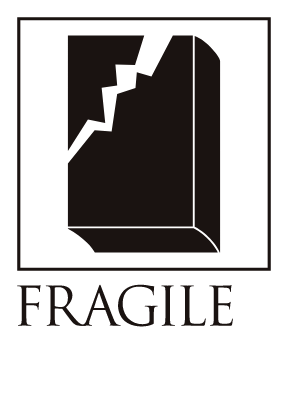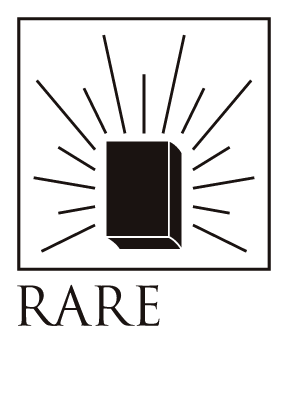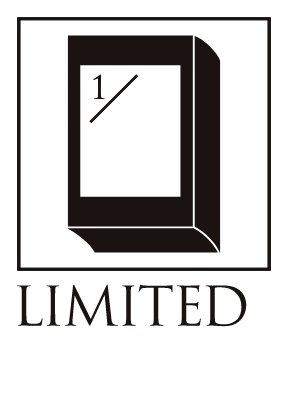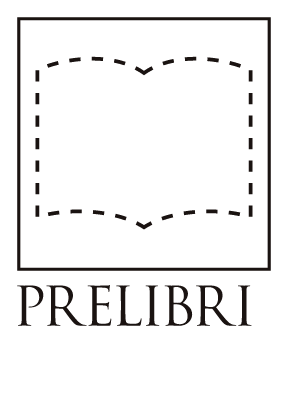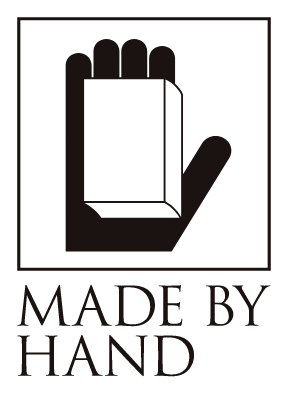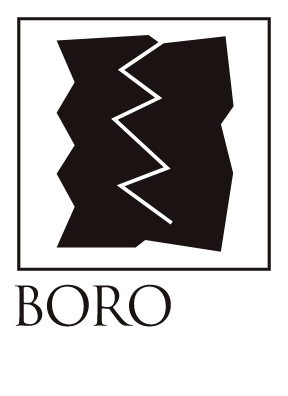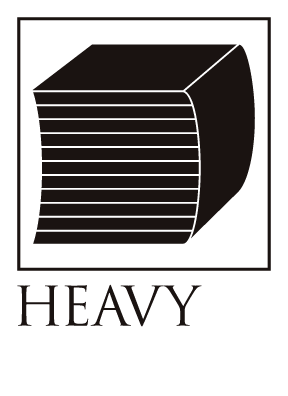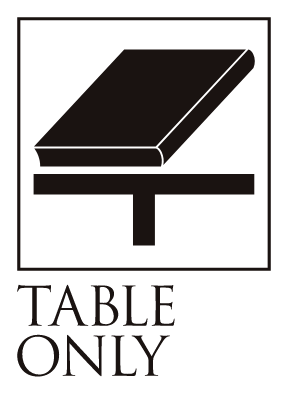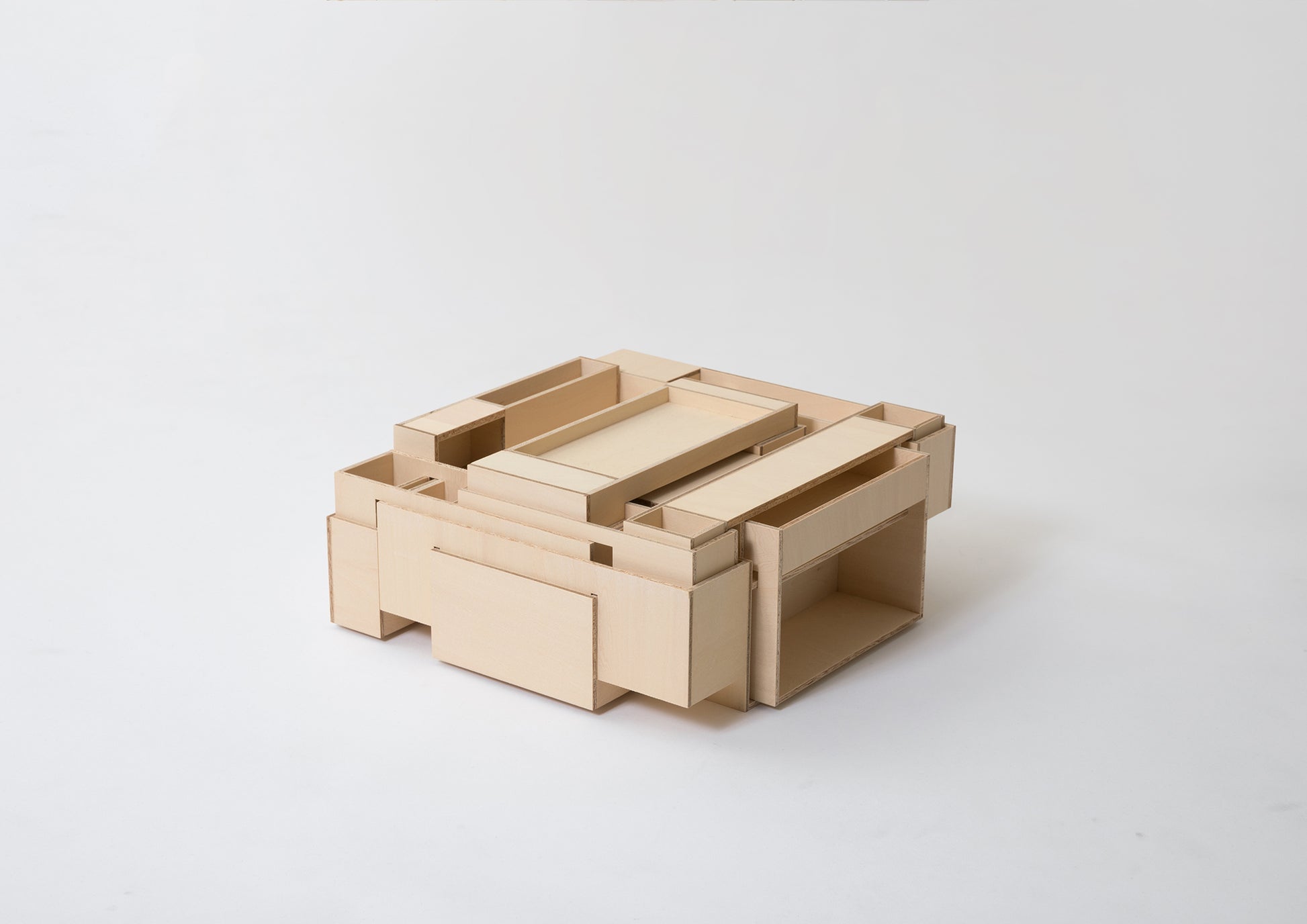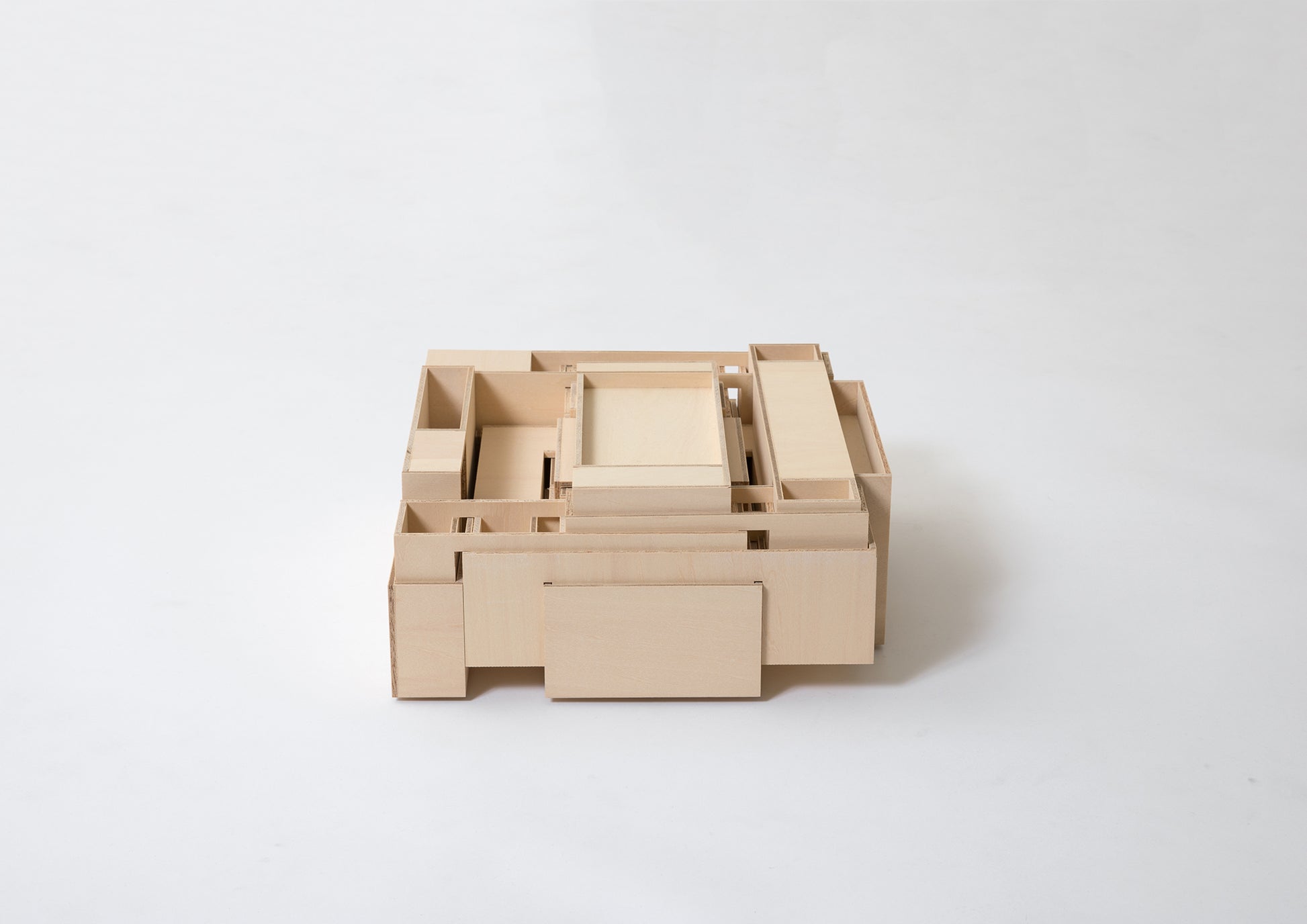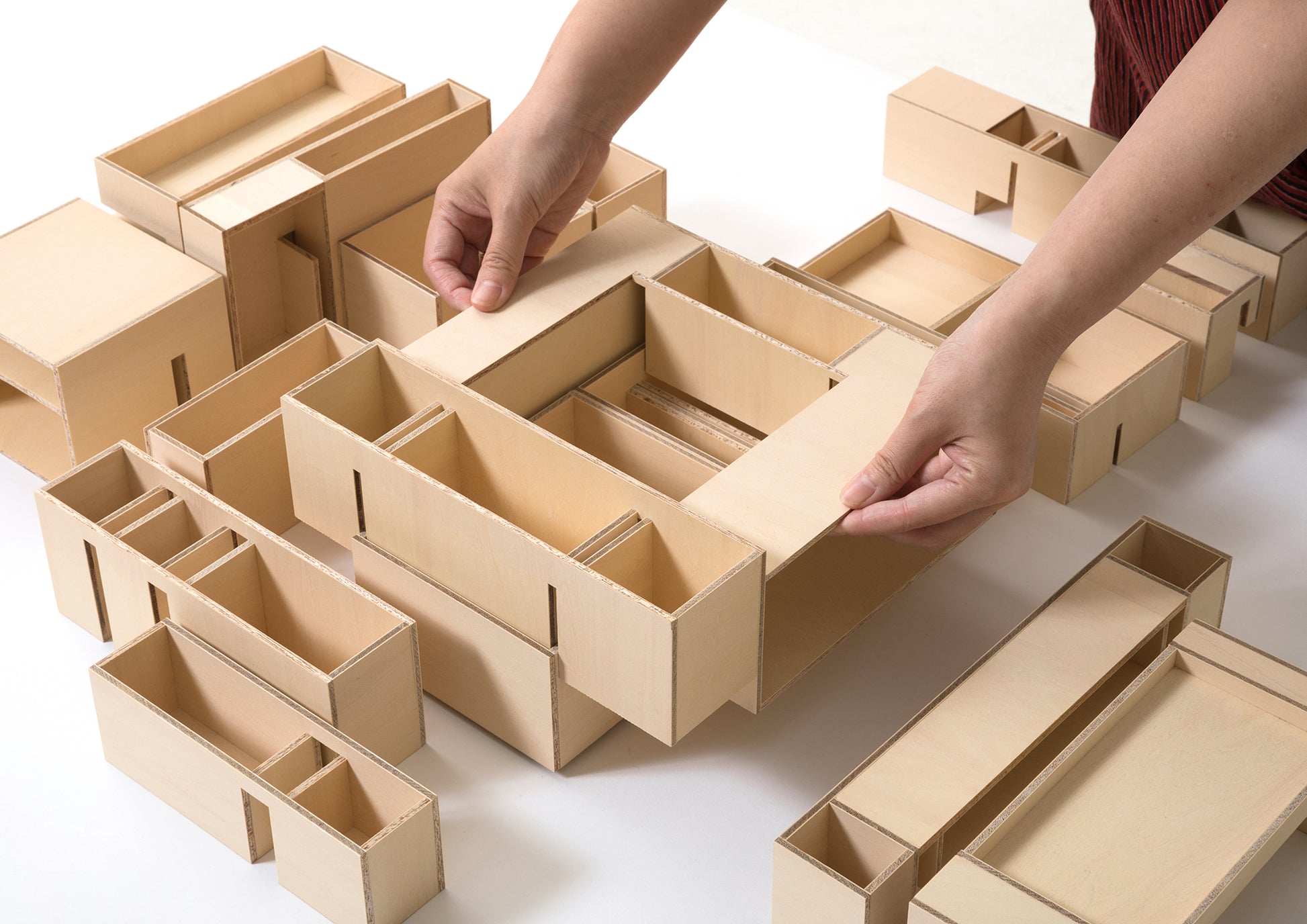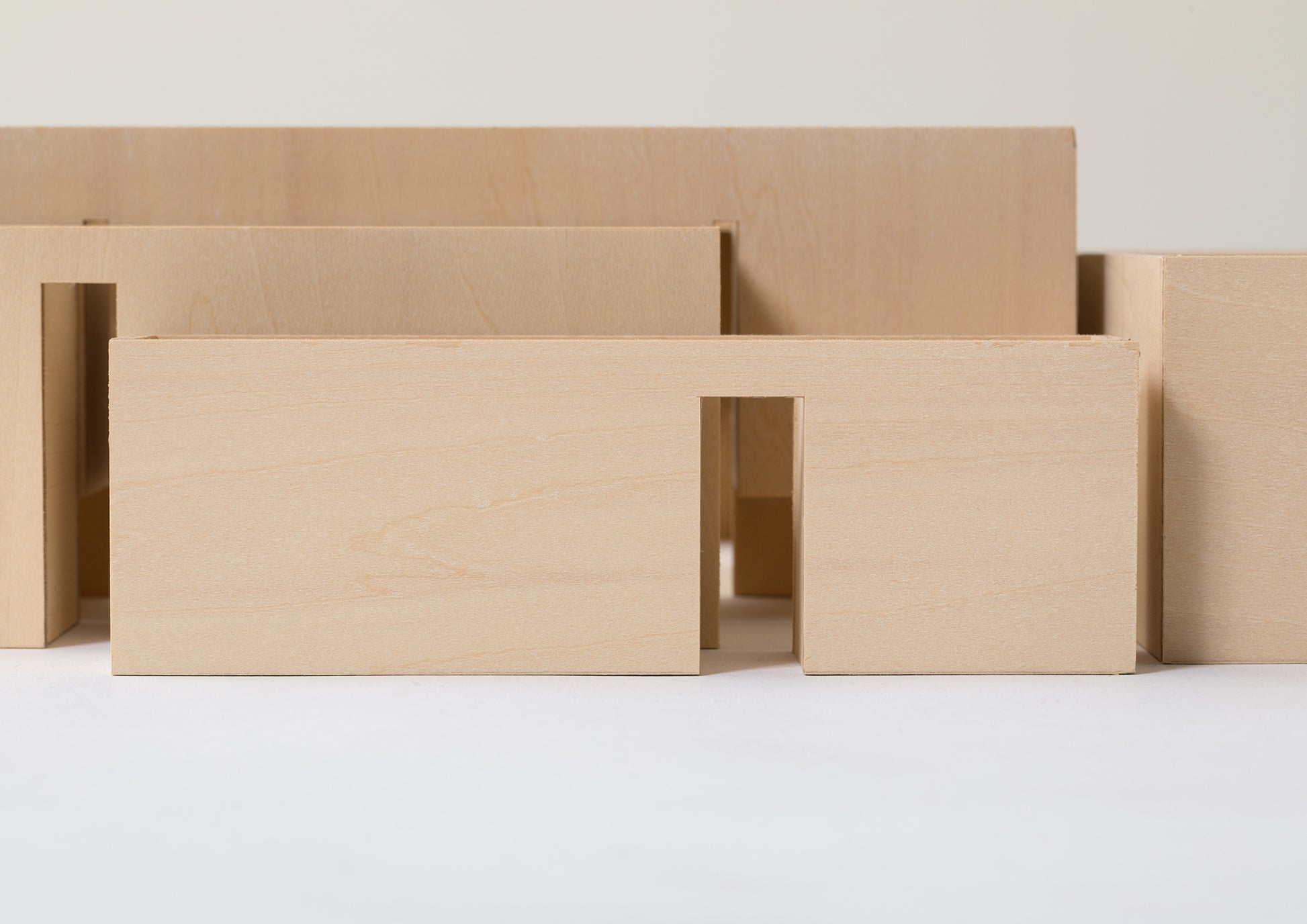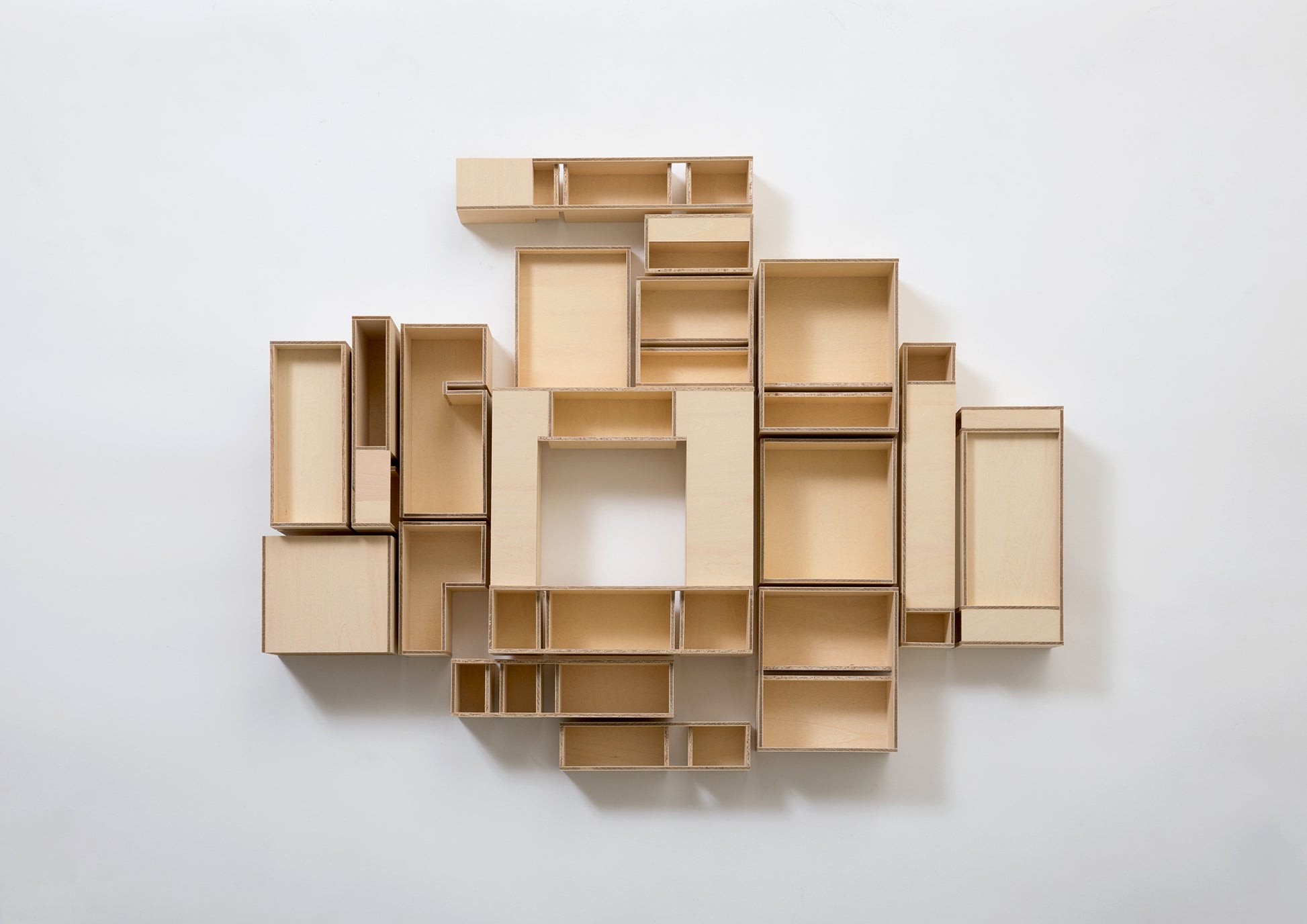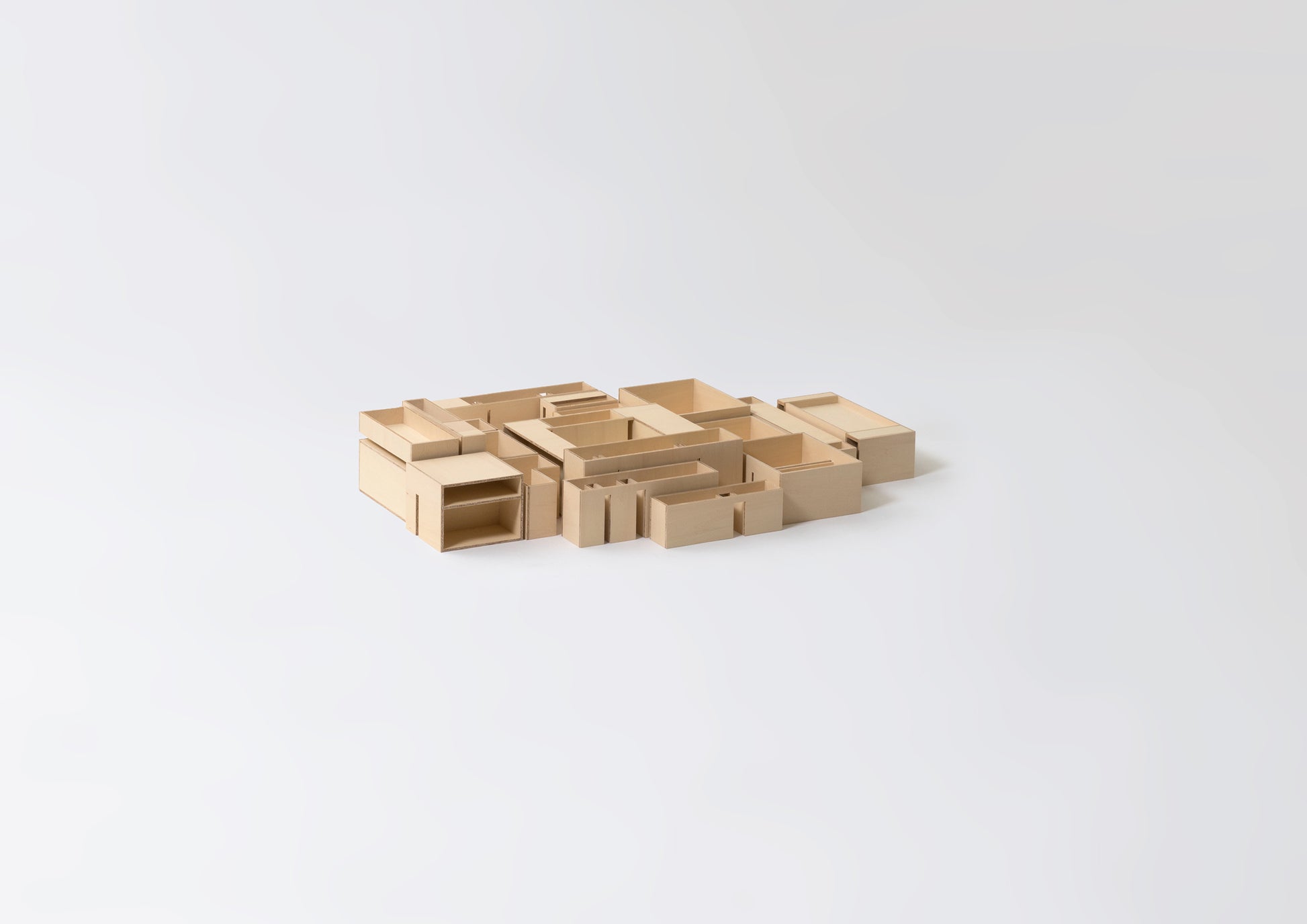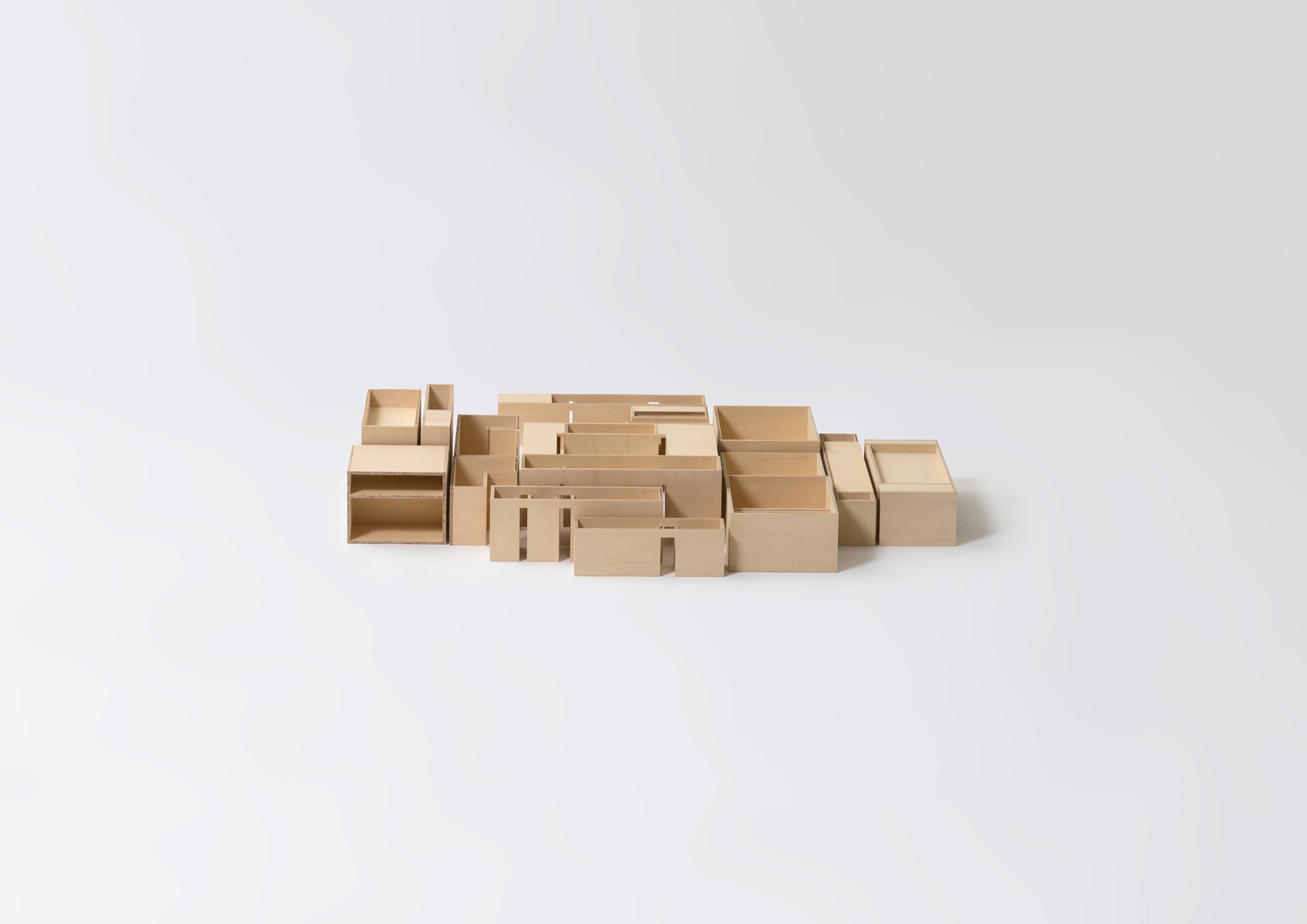Overlapping boxes 3
Bibliographic Details
- Title
- 重なる箱 3
- Artist
- コイズミアヤ / Aya Coizumi
- Year
- 2017
- Size
- h138 × w307 × d326mm
- Weight
- 2.5kg
A masterpiece of overlapping boxes.
Soft and mechanical
A three-dimensional representation of reading.
The "Overlapping Boxes" series is one of Aya Koizumi's representative sculptural works. In the early days, the artist created "boxes" that contained miniature structures such as stairs and pillars, but through a process of trial and error, he discovered the idea of "nesting boxes" as he transformed the energy generated by the fact that they are "boxes" into a pure "shape." Although the boxes are nested, this is not a centripetal nesting structure in which boxes are stacked in order, like a tsudura basket or a matryoshka doll, but rather a unique method in which boxes are shifted centripetally. We will introduce the "Overlapping Boxes" series of works that were born from the idea of "nesting boxes."
This work, No. 3 in the "Overlapping Boxes" series, which currently has 11, is the most complex in the series' history, and when unfolded it reveals a city built on sand, an underground corridor, or a labyrinth-like landscape.
The concept is simple. It combines and develops the vertical overlapping caused by nesting with the horizontal movement caused by sideways sliding. However, when completed, it is an impregnable labyrinth when closed, and a castle built on sand when opened. This is Koizumi Theater.
According to Koizumi, up until the previous work, the process was like going from one box to the next, so to speak.Proceed calmly"How to make itIn contrast to that, this work was a production experience in which the box was "waiting" for the next box. While constantly giving feedback on the state in which the boxes could be stacked vertically and horizontally, while also considering the next box and the box after that,CAD?Without usingEyes and handsJust the headThere's no doubt that designing it was a brain-sweaty process.
When you actually touch the work, you can see that it is well-made. When you open the boxes one by one from the closed state, it is like reading Hofstadter's "Gödel, Escher, Bach" and discovering the pages of a vast book.The door to an unknown world keeps opening, and there is an endless excitement.The sculpture is about A3 size, but it is an intellectual and spectacular masterpiece. The final scene, which resembles a bazaar in Marrakech (Morocco), is also very moving.
Text by Kenya Nakazawa (FRAGILE BOOKS)
